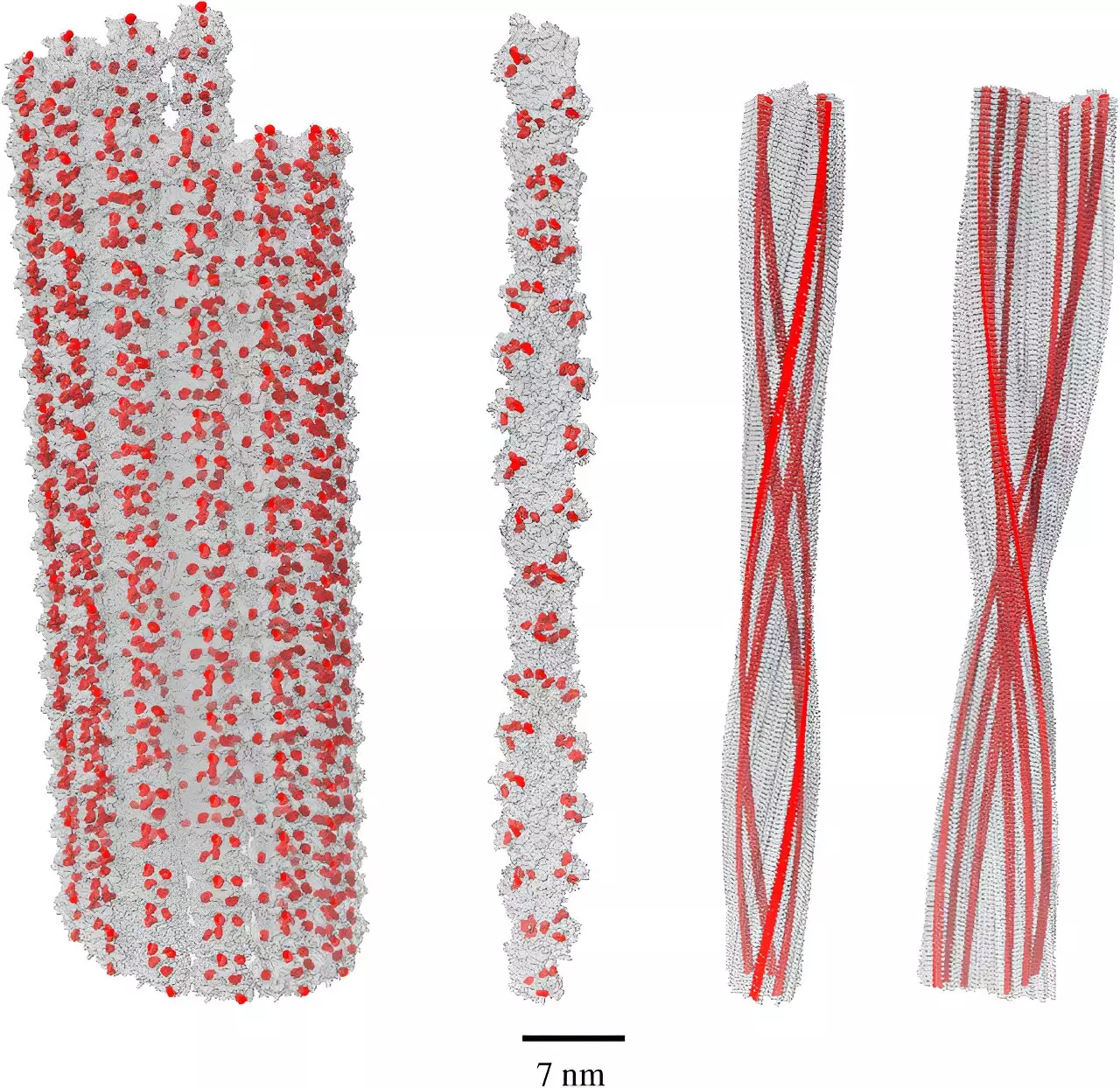Alzheimer’s disease remains one of the most complex and enigmatic challenges facing modern medicine. Traditionally, the narrative surrounding Alzheimer’s has largely revolved around amyloid protein aggregates, often viewed as the central culprits responsible for the neurodegeneration characteristic of the disease. However, intriguing research is prompting a reevaluation of this long-standing perspective, suggesting that rather than being a primary cause of harm, amyloid fibrils might actually serve a protective function against cellular distress.
Research has consistently shown an association between amyloid fibrils and Alzheimer’s, leading to significant investment in treatments aimed at reducing amyloid levels in the brain. Yet, a notable disconnect has emerged: many individuals with high levels of amyloid do not demonstrate symptoms of dementia. This has instigated a critical inquiry into whether amyloids are indeed detrimental or if they represent the body’s adaptive strategy in response to broader physiological challenges.
A groundbreaking study led by Dr. Philip Kurian from Howard University introduces a transformative lens through which we can analyze the behavior and implications of amyloid fibrils. The research team has identified a quantum effect known as single-photon superradiance, which could play a critical role in how these protein structures interact with light and energy in the human body. Traditionally thought of as mere pathogenic entities, amyloid fibrils, once reexamined through the filter of quantum biology, might possess attributes that help mitigate oxidative stress—a major underlying factor in Alzheimer’s progression.
Tryptophan, an amino acid prevalent in these fibrils, demonstrates an extraordinary capacity to engage with superradiant effects. The current findings indicate that the aggregation of amyloid fibrils significantly amplifies this effect, providing a much stronger response than previously observed in simpler protein structures. This raises fascinating possibilities: could amyloids, rather than exacerbating disease processes, serve as a biological mechanism to defend against oxidative damage?
The phenomenon of oxidative stress arises when the balance between free radicals and antioxidants shifts, resulting in cellular damage. It is understood that a significant load of oxidative stress correlates with an increased risk of developing Alzheimer’s disease. Herein lies the importance of Kurian’s findings—the potential for amyloid fibrils to absorb harmful high-energy photons and convert them into less harmful forms could imply a hidden protective role in cellular health.
Furthermore, the structural characteristics of amyloid fibrils, featuring dense arrangements of tryptophan, suggest they may act similarly to solar panels, effectively ‘harvesting’ damaging energy to protect neuronal integrity. The idea that amyloid aggregates may represent an effort by the body to adapt to a harsh biochemical environment fundamentally questions current treatment paradigms that aim to eliminate these proteins.
If the theories presented in Kurian’s research hold true, the implications are significant. This shift in perspective may radically transform how researchers approach Alzheimer’s disease. Rather than focusing solely on reducing amyloid levels, a more intricate investigation into the roles these proteins may play in cellular protection is warranted. Consequently, therapies could pivot towards enhancing the protective properties of amyloids or finding alternative methods to alleviate the oxidative stress that precedes neurodegeneration.
As Dr. Kurian aptly notes, understanding the interactions of light and quantum matter offers essential insights into broader biological processes. It urges an interdisciplinary approach that integrates quantum biology with traditional neuroscience, potentially illuminating new pathways to combat neurodegenerative diseases. This line of thinking is echoed by Mr. Hamza Patwa, a key contributor to the study, who emphasizes the necessity of breaking down academic silos in the pursuit of innovative scientific understanding.
In essence, the intersection of quantum effects and biological mechanisms presents a pioneering frontier in the understanding of diseases like Alzheimer’s. As we strive to decipher the biochemical complexities of the human body, it becomes increasingly clear that embracing an interdisciplinary perspective could yield unprecedented insights.
As the scientific community prepares to validate Kurian’s findings through experimental approaches, there is a palpable sense of anticipation surrounding the future of Alzheimer’s research. If amyloid fibrils do indeed function as neuroprotective agents, the quest for effective therapies could undergo a paradigmatic shift from targeting these structures to harnessing their innate capabilities. In our pursuit of knowledge, it is imperative that we maintain an open mind, ready to adapt our theories in light of new evidence, for it is through such evolutions that genuine progress is made.

